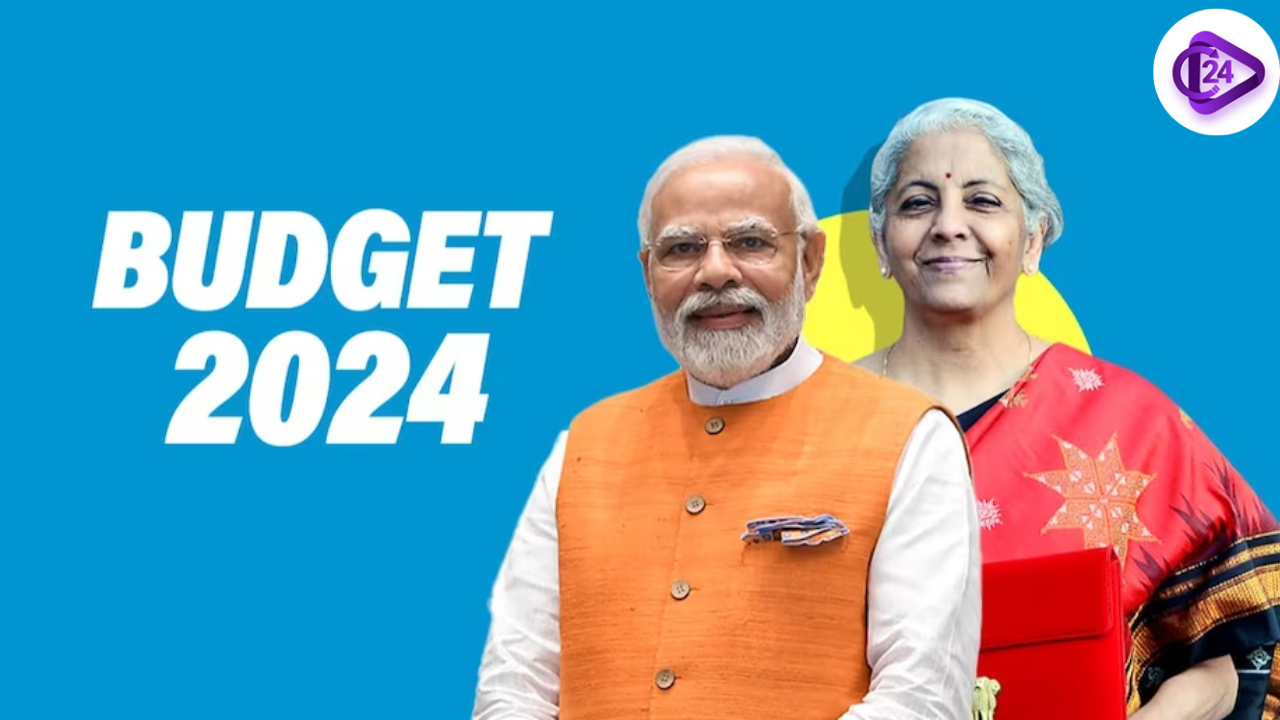Major Highlights of Interim Budget 2024-25

On February 1, 2024, the present Finance Minister, Nirmala Sitharaman presented her sixth budget (five Union Budget and one Interim Budget), with this, she also became the second Finance Minister to present the six union budget, after Moraji Desai, who presented ten budgets including eight Union Budget and two Interim Budget. Here are the Major Highlights of Interim Budget 2024-25.
Major Highlights of Interim Budget 2024-25
What is Budget?
The budget is an Annual Financial Statement (AFS), mentioned in Article 112 of the Indian Constitution. It is a blueprint of government on expenditures, taxes it plans to levy, and other transactions that affect the economy.
What is Interim Budget?
-
It covers the expenses and revenues of the government for a short period in an election year until a new government is elected.
-
This annual financial statement will be ‘interim’ as the government faces a general election this year, in April-May 2024.
-
The full budget for FY24-25 will be unveiled in July by the incoming government, whether new or re-elected.
-
With the use of the Union Budget Mobile App, anyone can access the "paperless form" of Interim Budget 2024-25.
-
It is a bilingual app, available in English and Hindi.
-
This mobile application can be downloaded on Android, iOS, or from the Union Budget Web Portal (www.indiabudget.gov.in).
FM Nirmala Sitharaman presented her sixth Budget
-
This is the sixth budget presentation put forth by the finance minister, Nirmala Sitharaman including five annual and one interim.
-
With the presentation of the interim Budget on February 1, she surpassed the records of her predecessors like Manmohan Singh, Arun Jaitley, P. Chidambaram, and Yashwant Sinha, who had presented five budgets in a row.
-
Morarji Desai, as Finance Minister, had presented five annual Budgets and one interim Budget between 1959 and 1964.
-
He also holds the rare achievement of presenting a total of 10 budgets (Eight Union Budget + 2 Interim Budget).
Major Highlights of Interim Budget 2024-25
-
The tax rates, including import duty, are unchanged in the interim Budget 2024.
-
Certain benefits to start-ups and tax exemptions to certain IFSC units expiring in March will be extended to March 2025.
-
New regime tax slabs
-
No tax would be levied for income up to ₹3 lakh
-
Income between ₹3-6 lakh would be taxed at 5% (tax rebate under Section 87A is available)
-
Income between ₹6-9 lakh would be taxed at 10% (tax rebate under Section 87A on income up to ₹7 lakh is available)
-
Income between ₹9-12 lakh at 15%
-
Income between ₹12-15 lakh at 20%
-
Income of ₹15 lakh and above will be taxed at 30%
-
The tax rates in the new tax regime are the same for all categories of Individuals, i.e. Individuals, Senior citizens, and Super senior citizens.
-
-
Old regime tax slabs
-
Income up to ₹2.5 is exempt from taxation under the old tax regime.
-
Income between ₹2.5 to ₹5 lakh is taxed at the rate of 5% under the old tax regime.
-
Personal income from ₹5 lakh to ₹10 lakh is taxed at a rate of 20% in the old regime
-
Under the old regime personal income above ₹10 lakh is taxed at a rate of 30%.
-
In the old tax regime, the income tax exemption limit was up to ₹3 lakh for senior citizens aged above 60 years but less than 80 years, and up to ₹5 lakh for super senior citizens aged above 80 years.
-
-
-
The government will launch a housing scheme for the middle class to enable them to buy or build their own homes
-
Hike in capital expenditure to over ₹11 trillion
-
FY25 gross borrowing is estimated at ₹14.13 trillion, achieving a reduction from that of FY24.
-
FY25 fiscal deficit target of 5.1% as against the expectation of 5.3% levels.
-
In FY24 the fiscal deficit target of 5.8% has been achieved because of better revenue mobilization as against the target of 5.9%.
-
More medical colleges to be set up using existing infrastructure, a committee is to be set up to examine issues and make recommendations.
-
Healthcare cover under Ayushman Bharat scheme to be extended to all Anganwadi workers, helpers
-
Efforts to boost farmers' income will be stepped up
-
Government to promote private investment in post-harvest activities
-
Withdrawal of outstanding disputed tax demands. The move is set to benefit 1 crore taxpayers.
Budget Estimates for 2024-25
-
Total receipts other than borrowings: Rs. 30.80 lakh crores
-
Total expenditure: Rs. 47.66 lakh crores
-
Tax receipts: Rs. 26.02 lakh crores
-
A Scheme of 50-year interest-free loans for capital expenditure, to states will be continued with outlay of Rs 1.3 lakh crores
-
Fiscal deficit in 2024-25 is estimated to be 5.1% of GDP, adhering to the path of fiscal consolidation
-
Gross and net market borrowings through dated securities during 2024-25 are estimated to be Rs 14.13 lakh crores and Rs 11.75 lakh crores respectively, both less than that in 2023-24
-
Lower borrowings by central government will facilitate larger credit for private sector
Revised Estimates of 2023-24:
-
Budget 2024 Live: RE of total receipts other than borrowings is Rs. 27.56 lakh crores, of which tax receipts are Rs 23.24 lakh crores
-
RE of total expenditure is Rs 44.90 lakh crores
Budget 2024-25: Maternal and Child Healthcare
-
Various schemes under maternal and child health care to be brought under one comprehensive programme for synergy in the implementation
-
Government will encourage vaccination for girls in the age group 9 - 14 years to prevent cervical cancer
-
Upgradation of Anganwadi centres under Saksham Anganwadi and Poshan 2.0 will be expedited for improved nutrition delivery, early childhood care and development
-
A newly designed U-Win platform for managing immunization and intensified efforts of Mission Indradhanush will be rolled out.




